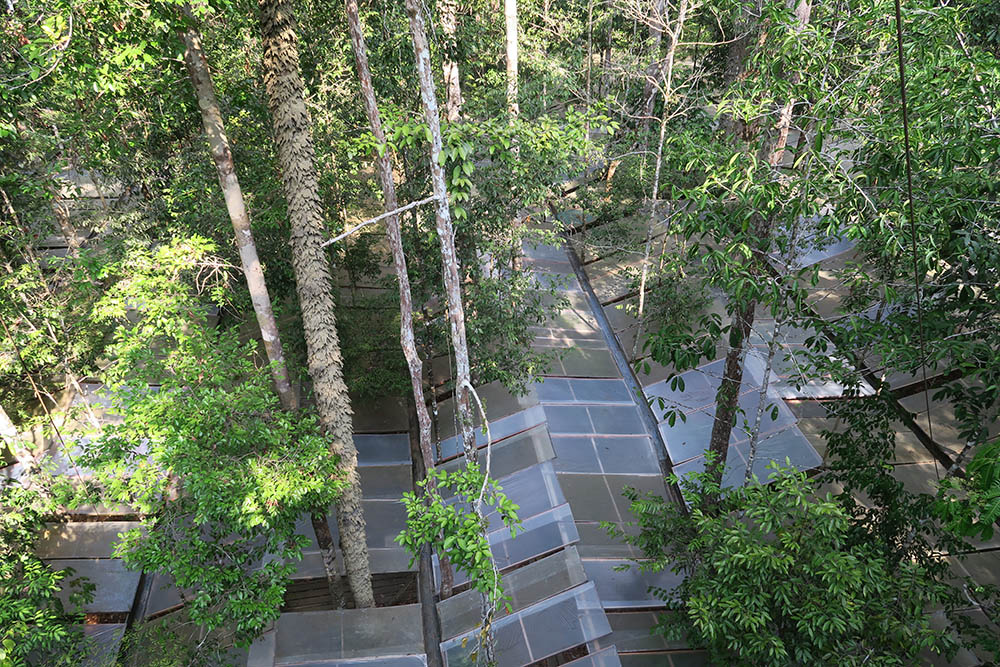'Plumbing' failure kills tallest rainforest trees

Vulnerability to internal plumbing failure puts the tallest trees in rainforests at increased risk of death during drought, a study in the Amazon forests in Brazil has found.
The research found that as water in the soil dried up during drought, the tallest trees were affected by air bubbles entering their internal plumbing, making it difficult for the trees to transport water and other nutrients to their leaves.
“We found increased death rates in the larger trees, and the trigger that led to their demise was vulnerability to failure in the water-transporting tissues in the wood,” said Professor Patrick Meir, from The Australian National University (ANU).
“With droughts in some regions predicted to intensify and lengthen with global warming, the increased death of large trees in rainforests could signficantly increase carbon dioxide emissions from Amazonia, and influence the global carbon cycle,” said Professor Meir, from the ANU Research School of Biology.
The new understanding will help improve predictions of the impacts of climate change.
The Amazon is the largest rainforest in the world and droughts have the potential to switch Amazonia from being a net absorber of carbon to a source, adding carbon dioxide the atmosphere
Widespread tree death would add further large amounts of carbon dioxide to the atmosphere as the dead trees decompose, said first author of the study Dr Lucy Rowland, of the University of Edinburgh’s School of GeoSciences.
“It could also mean rainforests in the future are populated by smaller trees, which store less carbon,” Dr Rowland said.
Until now, how tropical rainforest trees die from drought was poorly understood.
The team found that during severe drought, tree death is associated with the point where air bubbles can enter the water-conducting tissues in the wood and cause breakages in the water columns, preventing the transport of water and nutrients to the canopy.
“The tallest trees appear to be most vulnerable to this process. Smaller trees are more likely to survive,” said Professor Meir.
The research, published in the journal Nature, is an output from the world's longest-running ecosystem-scale experimental drought study in tropical rainforest.
Over a 13 year study period, researchers monitored tree growth and survival during experimental drought in a one-hectare stand of trees in the eastern Amazon in Brazil, and in non-droughted forest. They also measured sugar levels and the performance of the water transport system in the trees.
The researchers had thought that drought might have prevented trees from making enough sugars from photosynthesis to fuel their metabolism, causing them to slowly starve and die.
However, the team found that the droughted trees did not have lower sugar levels than their non-droughted counterparts, and they grew at a normal rate up until death, apparently triggered by the failure of their plumbing.
The study was funded by the Natural Environment Research Council, the Brazilian National Research Council, the European Union and the Australian Research Council. The work was led by the University of Edinburgh UK and the Federal University of Pará, Brazil, and was carried out in collaboration with ANU, the Universities of Leeds and Oxford, and research centres in Spain and Brazil.
Related links:
Journal article:
- L. Rowland, A. C. L. da Costa, D. R. Galbraith, R. S. Oliveira, O. J. Binks, A. A. R. Oliveira, A. M. Pullen, C. E. Doughty, D. B. Metcalfe, S. S. Vasconcelos, L. V. Ferreira, Y. Malhi, J. Grace, M. Mencuccini, P. Meir. Death from drought in tropical forests is triggered by hydraulics not carbon starvation. Nature, 2015; DOI: 10.1038/nature15539.
Media:
- Tallest trees could die of thirst in rainforest droughts, study finds, Science Daily, 23 November, 2015
- Tallest trees first to be killed by drought in the Amazon, Mongabay, 3 December 2015
- Tallest trees could die of thirst in rainforest droughts, study finds, Phys Org, 23 November 2015
